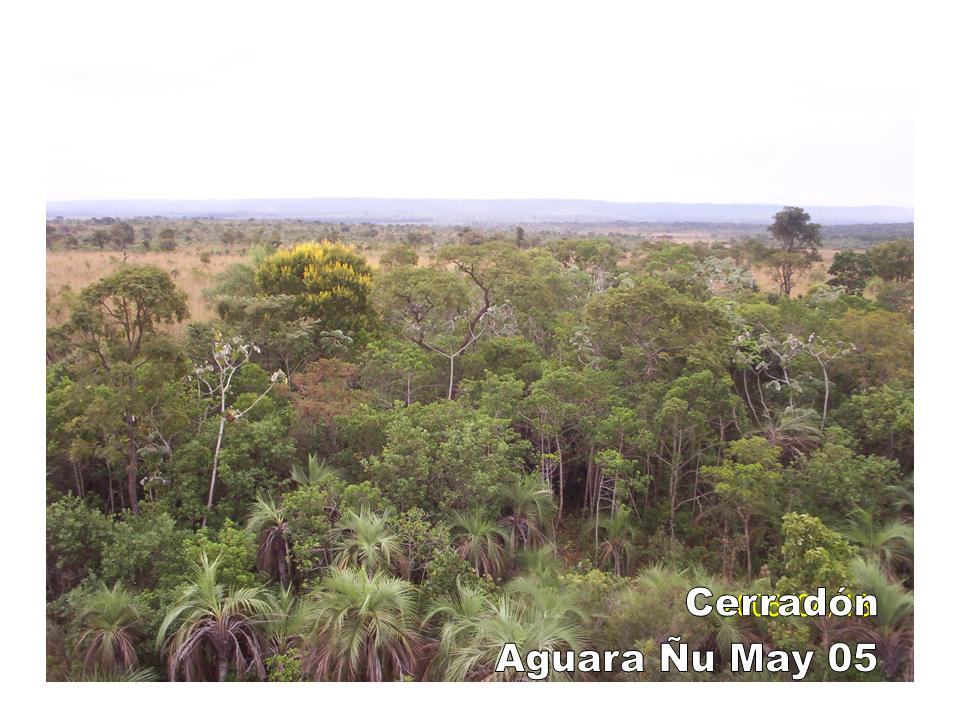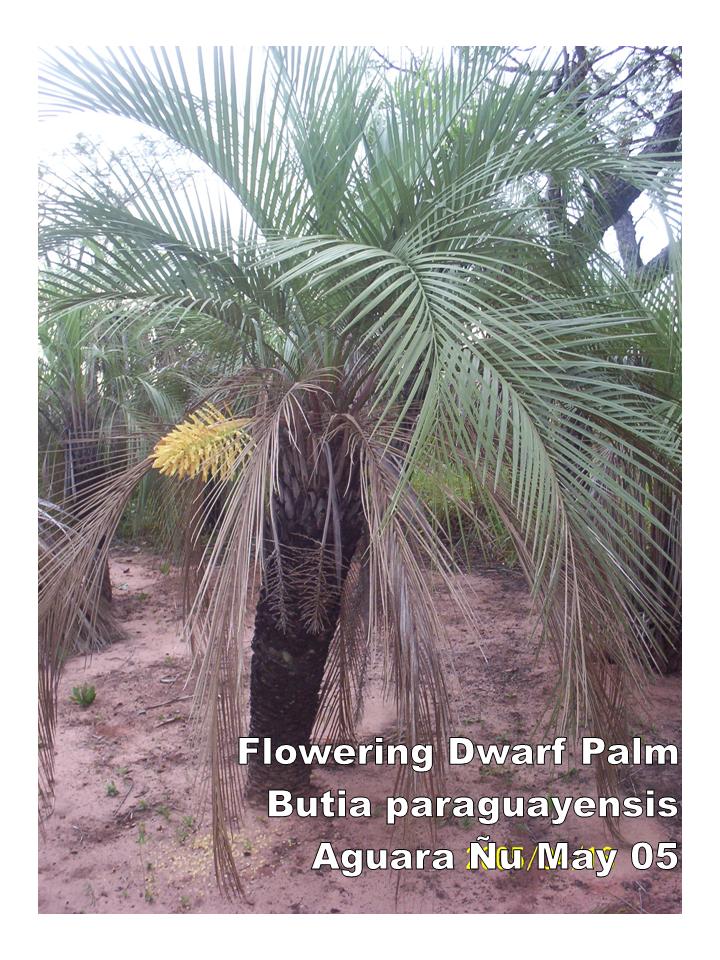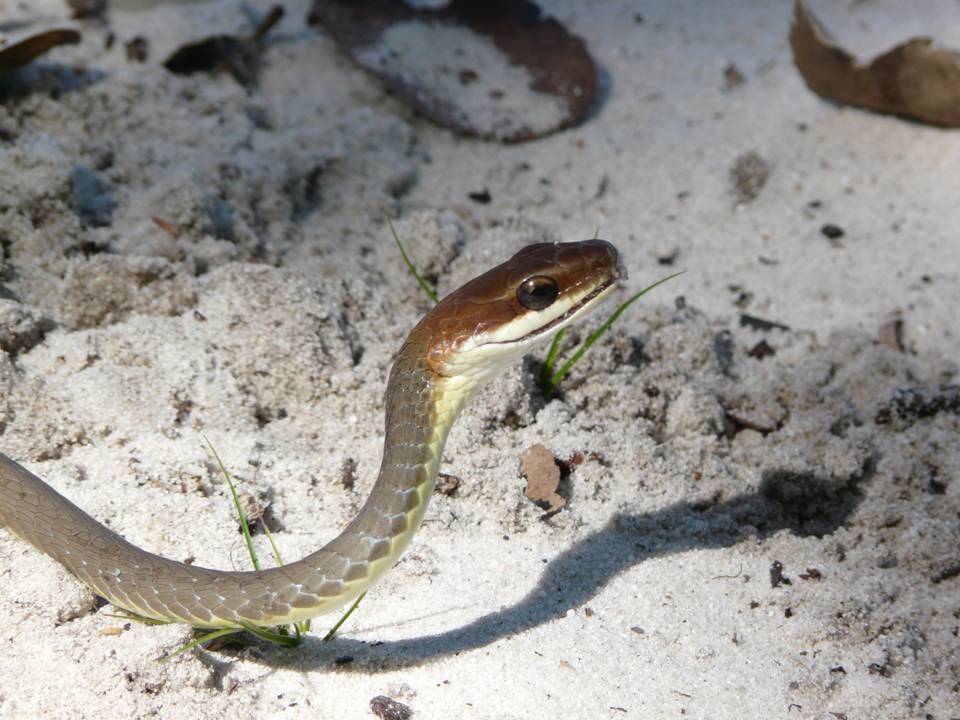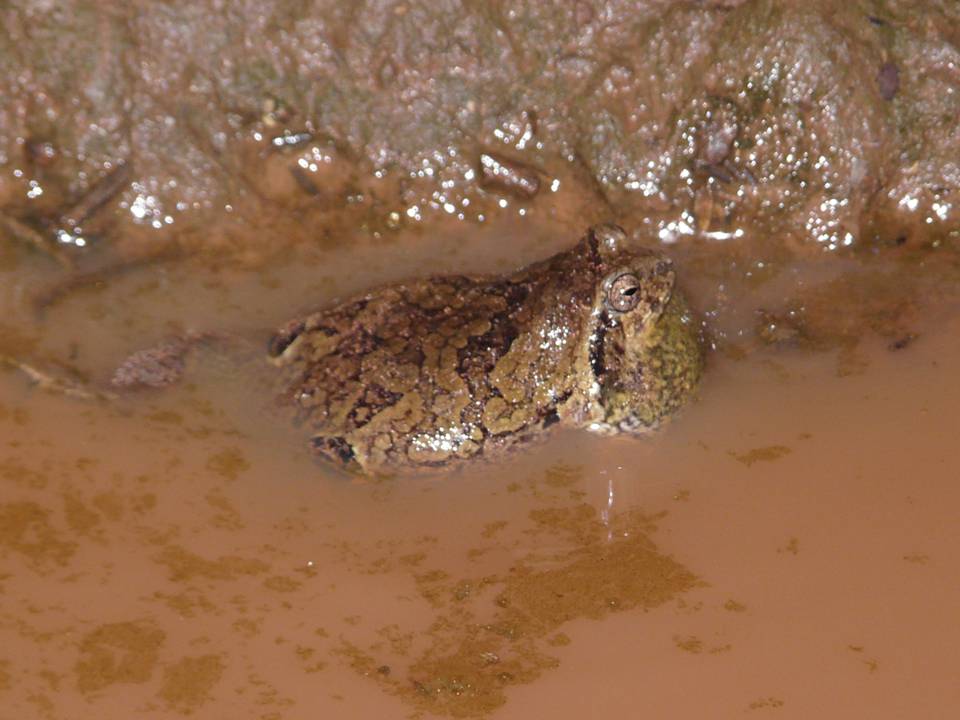



.jpg)

Designed by Paul Smith 2006. This website is copyrighted by law. Material contained herewith may not be used without the prior written permission of FAUNA Paraguay. Photographs on this web-site were taken by Paul Smith, Hemme Batjes, Regis Nossent, Lars Hansen and Huguito Cabral and are used with their permission.
A notable feature of the cerrado is the apparent sparsity of the birdlife. For the most part birds aggregate into loose, widely-spaced, mixed species flocks, such that you may walk for kilometres without even hearing a bird, then suddenly find yourself surrounded by them! In Sensu Stricto and Campo Sucio areas these flocks typically form around two species, Black-throated Saltator and/or White-banded Tanager, which act as involuntary sentinels for the whole flock thanks to their habit of alarm-calling from the top of the nearest bush at the merest hint of a danger. Red-crested Finch is perhaps the most abundant species in Campo Sucio, while Southern Beardless Tyrannulet, Suiriri Flycatcher and various Elaenias (most notably Lesser Elaenia) are also prominent members of these mixed flocks. More often heard than seen is the skulking Tawny-crowned Pygmy-tyrant, a drab little fellow who only exhibits the tawny crown that gives him his name when he is really fired up. One of the most spectacular Campo Sucio birds is the localised White-rumped Tanager, pairs or small groups calling clamorously from tree-tops, building to a frenzied crescendo before fading out.
Campo Limpio at first sight appears to be totally devoid of life. For most of the year even the grass looks brown and dead, with patches of short grass broken by scattered longer stems that provide a surprising amount of cover for its inhabitants, as well as singing perches for its passerine community. Even birds the size of Greater Rhea and Red-legged Seriema can lose themselves in this “forest”, thanks to the optical mind games that the waving stems play with observer´s eyes. Two of the most abundant species here are Grassland Sparrow which runs mouse-like on the ground and the oddly-shaped Wedge-tailed Grassfinch, its long tail flapping behind it as it takes flight. Be persistent though and you will start to uncover the real threatened gems of the cerrado-the harlequin-faced Black-masked Finch, the delicate Sharp-tailed Grass-tyrant, the muted but handsome Bearded Tachuri and the cerrado specialist Sporophila Plumbeous Seedeater. These birds are often found in loose association with each other, delivering a flurry of ticks after hours of nothingness, but rarely form the large flocks so typical of Campo Sucio areas. Arguably the most spectacular of the Campo Limpio birds is the vulnerable Cock-tailed Tyrant, a bird that requires completely undisturbed habitat. The best time to see them is during October and November when males perform their aeroplane-like display flights with their remarkable tails cocked well up over their backs, a behaviour that has earned them the nickname “Avioncito” (little aeroplanes). Another handsome cerrado flycatcher, the White-rumped Monjita, displays its spectacular wing-pattern during graceful sallies from a prominent perch for passing insects.
Serious tickers will have their eye on two species in particular. The little known Lesser Nothura was known only from a few scattered records in widely-spaced locations in Brazil until its remarkable discovery in Paraguay in 2002. It has since been found to be fairly common at Laguna Blanca, Dep. San Pedro which is rapidly becoming the best place in the world to see this rare species. They call most often in the early morning and early evening, and are relatively easy to track down once the voice is known, sometimes allowing an observer to approach within a few metres as they crouch low, confident in their camouflage. Look out also for Red-wing
Tinamou and Spotted Nothura, both heard more often than they are seen. The other “biggy” is the endangered White-winged Nightjar, a distinctive species that can be easily observed in the right habitat. It prefers open Campo Sucio with scattered termite mounds or patches of bare ground which are used for display purposes. Other cerrado nightbirds prefer less open habitats - Scissor-tailed and Little Nightjars are most numerous in bushier Campo Sucio and Sensu Strictu.
Cerradón varies in density from fairly open to thick with an impenetrable undergrowth of spiny terrestrial bromeliads. In many ways it is reminiscent of Chaco woodland, with the plants adapted to drought conditions with frequent fires. One ingenious anti-fire adaptation used by some tree species is to have a subterranean trunk, so that only a small amount of the plant is exposed to the danger of burning and allowing rapid regeneration. The calls of Undulated, Tataupa and Small-billed Tinamous are incessant day and night at certain times of year, but the callers themselves are do not show themselves quite so readily. The most conspicuous Cerradón inhabitants are the endemic Curl-crested Jay, flocks of 6 to 8 birds calling loudly as they fly between forest islands. Other typical, but perhaps less eyecatching cerradón birds include Narrow-billed Woodcreeper, Brown-crested Myiarchus and Rufous Casiornis. Along forested waterways you may be lucky enough to encounter the spectacular Helmeted Manakin the red and black males sporting a bizarre tufted crest on their forehead. At night Tropical Screech Owl and Grey Potoo emerge, Pauraque sit on forest tracks and Rufous Nightjar calls “whip-whip-wee-woo” from low branches. Scrubbier areas of cerradón may initially look less appealing but can still hold some good birds, notably Rusty-backed Antwren, surprisingly bold for an antbird, and the larger, shier Rufous-winged Antshrike. Dark-billed Cuckoo is also numerous in some areas, though its clucking call may have to be traced to find it.The skies are always worth checking for raptors. Aplomado Falcon, American Kestrel and White-tailed Hawks are generally the most numerous species, along with Caracaras and Vultures, including the grotesquely handsome King Vulture. The raptor that most birders will want to see though is the elusive Crowned Eagle. Oddly this species is

crepuscular in habits and may be seen perched prominently on a bare tree at dusk, when it can be surprisingly obliging to the observer.
For the most part mammals are few and far between, though the sudden appearance of their prints in the wet sand after a rainstorm reveals more species to be present than you might initially expect. Easily the most interesting of the cerrado specialist mammals is the Aguara Guazu or Maned Wolf, a lolloping, long-legged fox-like beast that rarely allows more than a fleeting view. This species is more vegetarian than other Canids, being particularly fond of the fruits of the Pindo palm when they are in season. Following a line of prints will often bring you to a pile of seed-filled vomit the result of over-exploitation of the delicious starchy fruits of the palm and a characteristic sign that the wolf is in the area. Other mammals that are often encountered in the cerrado include Crab-eating Fox, various Armadillos and Collared Peccary, though in general these species prefer Cerradón. Look out also for the large marten-like Tayra, a voracious predator and Red and Grey Brocket Deer.
So despite its apparent uniformity and infertility, the very characters that have led people to consider it a vast wasteland, the cerrado is actually a varied and unique habitat. When it bursts into flower it can be extremely beautiful, the air filled with the perfume of a thousand plants, while large numbers of wild fruits provide a temporary bounty for its wildlife and passing birders (only very few of the cerrado fruits are inedible!). The diversity of birds does not approach that of the plants, but those that do occur here are highly specialised and well worth the effort to track down. In Paraguay more exciting species undoubtedly await the adventurous birder willing to brave the harsh conditions to find them. If you really want a challenge why not try and seek out new populations of the elusive Ocellated and Rufous-crowned Crakes, both certainly more widespread than they currently appear to be, while the rediscovery of the Dwarf Tinamou in Paraguay is the Holy Grail for local birders (click here). The type specimen of this enigmatic sparrow-sized gamebird comes from Paraguay, though the bird hasn´t been recorded here since! Though the cerrado has long since disappeared from where the bird was originally located, large areas of potential hiding places still remain and the chances are it is still around, just waiting for one lucky birder to stumble across it!!
ON LOCATION IN THE PARAGUAYAN CERRADO
Cerrado is a little hard to define. South American savanna doesn´t really suffice though it is often used, while the extreme variability in plant communities means that sometimes even the experts argue over whether a habitat constitutes cerrado or not! At the risk of over-simplifying, cerrado is vegetation growing on nutrient poor, sandy soils and in general it is hot (often very hot!) and dry. The vegetation types can be split broadly into four “groups”, though the plant species and so the appearance of these “groups” varies widely from one location to the next! Easiest to recognise is Campo Limpio (Clean Field), open and grassy with patches of bare sand. Throw a few trees and bushes into the mix though and you suddenly find yourself with Campo Sucio (Dirty Field), which varies from the relatively open Campo Sucio shown in Fig 9 to more closed areas dominated with bushes and only scattered grasses. Cerrado Sensu Stricto is typically bushy with scattered trees with the floor dominated by low-growing bushes (such as Pouteria) and not a grass stalk in sight! Finally the most extreme form is Cerradón (Cerrado Woodland) a dry, xerophytic woodland. In most cerrado areas a mosaic of all four “groups occurs” each with its specific bird communities.




.jpg)

